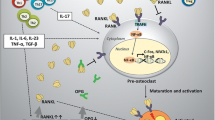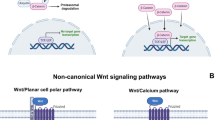Abstract
Fibrodysplasia ossificans progressiva (FOP) is a rare autosomal dominant disorder characterized by progressive heterotopic ossification. FOP is caused by a gain-of-function mutation in ACVR1 encoding the bone morphogenetic protein type II receptor, ACVR1/ALK2. The mutant receptor causes upregulation of a transcriptional factor, Id1. No therapy is available to prevent the progressive heterotopic ossification in FOP. In an effort to search for clinically applicable drugs for FOP, we screened 1,040 FDA-approved drugs for suppression of the Id1 promoter activated by the mutant ACVR1/ALK2 in C2C12 cells. We found that that two antianginal agents, fendiline hydrochloride and perhexiline maleate, suppressed the Id1 promoter in a dose-dependent manner. The drugs also suppressed the expression of native Id1 mRNA and alkaline phosphatase in a dose-dependent manner. Perhexiline but not fendiline downregulated phosphorylation of Smad 1/5/8 driven by bone morphogenetic protein (BMP)-2. We implanted crude BMPs in muscles of ddY mice and fed them fendiline or perhexiline for 30 days. Mice taking perhexiline showed a 38.0 % reduction in the volume of heterotopic ossification compared to controls, whereas mice taking fendiline showed a slight reduction of heterotopic ossification. Fendiline, perhexiline, and their possible derivatives are potentially applicable to clinical practice to prevent devastating heterotopic ossification in FOP.





Similar content being viewed by others
References
Kaplan FS, Le Merrer M, Glaser DL, Pignolo RJ, Goldsby RE, Kitterman JA, Groppe J, Shore EM (2008) Fibrodysplasia ossificans progressiva. Best Pract Res Clin Rheurmatol 22:191–205
Glaser DL, Rocke DM, Kaplan FS (1998) Catastrophic falls in patients who have fibrodysplasia ossificans progressiva. Clin Orthop Relat Res 346:110–116
Rogers JG, Geho WB (1979) Fibrodysplasia ossificans progressiva. A survey of forty-two cases. J Bone Joint Surg Am 61:909–914
Connor JM, Evans DA (1982) Fibrodysplasia ossificans progressiva. The clinical features and natural history of 34 patients. J Bone Joint Surg Br 64:76–83
Lanchoney TF, Cohen RB, Rocke DM, Zasloff MA, Kaplan FS (1995) Permanent heterotopic ossification at the injection site after diphtheria–tetanus–pertussis immunizations in children who have fibrodysplasia ossificans progressiva. J Pediatr 126:762–764
Kitterman JA, Kantanie S, Rocke DM, Kaplan FS (2005) Iatrogenic harm caused by diagnostic errors in fibrodysplasia ossificans progressiva. Pediatrics 116:e654–e661
Kawai T, Urist MR (1988) Quantitative computation of induced heterotopic bone formation by an image analysis system. Clin Orthop Relat Res 233:262–267
Hayashi T, Kawai T, Ishikawa A, Kawai H, Nakano K, Takei Y, Kuroki K (2008) Histological analysis of induced cartilage on the biodegradable or nonbiodegradable membranes from immature muscular tissue in vitro. J Biomed Mater Res A 86:1048–1054
Shore EM, Xu M, Feldman GJ, Fenstermacher DA, Cho TJ, Choi IH, Connor JM, Delai P, Glaser DL, LeMerrer M, Morhart R, Rogers JG, Smith R, Triffitt JT, Urtizberea JA, Zasloff M, Brown MA, Kaplan FS (2006) A recurrent mutation in the BMP type I receptor ACVR1 causes inherited and sporadic fibrodysplasia ossificans progressiva. Nat Genet 38:525–527
DiCesare PE, Nimni ME, Peng L, Yazdi M, Cheung DT (1991) Effects of indomethacin on demineralized bone-induced heterotopic ossification in the rat. J Orthop Res 9:855–861
Zhang X, Schwarz EM, Young DA, Puzas JE, Rosier RN, O’Keefe RJ (2002) Cyclooxygenase-2 regulates mesenchymal cell differentiation into the osteoblast lineage and is critically involved in bone repair. J Clin Invest 109:1405–1415
Rogers JG, Dorst JP, Geho WB (1977) Use and complications of high-dose disodium etidronate therapy in fibrodysplasia ossificans progressiva. J Pediatr 91:1011–1014
Brantus JF, Meunier PJ (1998) Effects of intravenous etidronate and oral corticosteroids in fibrodysplasia ossificans progressiva. Clin Orthop Relat Res 346:117–120
Gannon FH, Glaser D, Caron R, Thompson LD, Shore EM, Kaplan FS (2001) Mast cell involvement in fibrodysplasia ossificans progressiva. Hum Pathol 32:842–848
Kaplan FS, Tabas JA, Gannon FH, Finkel G, Hahn GV, Zasloff MA (1993) The histopathology of fibrodysplasia ossificans progressiva. An endochondral process. J Bone Joint Surg Am 75:220–230
Kaplan FS, Glaser DL, Shore EM, Pignolo RJ, Xu M, Zhang Y, Senitzer D, Forman SJ, Emerson SG (2007) Hematopoietic stem-cell contribution to ectopic skeletogenesis. J Bone Joint Surg Am 89:347–357
Glaser DL, Kaplan FS (2005) Treatment considerations for the management of fibrodysplasia ossificans progressiva. Clin Rev Bone Miner Metab 3:243–250
Yu PB, Hong CC, Sachidanandan C, Babitt JL, Deng DY, Hoyng SA, Lin HY, Bloch KD, Peterson RT (2008) Dorsomorphin inhibits BMP signals required for embryogenesis and iron metabolism. Nat Chem Biol 4:33–41
Yu PB, Deng DY, Lai CS, Hong CC, Cuny GD, Bouxsein ML, Hong DW, McManus PM, Katagiri T, Sachidanandan C, Kamiya N, Fukuda T, Mishina Y, Peterson RT, Bloch KD (2008) BMP type I receptor inhibition reduces heterotopic [corrected] ossification. Nat Med 14:1363–1369
Shimono K, Tung WE, Macolino C, Chi AH, Didizian JH, Mundy C, Chandraratna RA, Mishina Y, Enomoto-Iwamoto M, Pacifici M, Iwamoto M (2011) Potent inhibition of heterotopic ossification by nuclear retinoic acid receptor-gamma agonists. Nat Med 17:454–460
Heemskerk J, Tobin AJ, Bain LJ (2002) Teaching old drugs new tricks. Meeting of the Neurodegeneration Drug Screening Consortium, 7–8 April 2002, Washington, DC, USA. Trends Neurosci 25:494–496
Abbott A (2002) Neurologists strike gold in drug screen effort. Nature 417:109
Katagiri T, Imada M, Yanai T, Suda T, Takahashi N, Kamijo R (2002) Identification of a BMP-responsive element in Id1, the gene for inhibition of myogenesis. Genes Cells 7:949–960
Katagiri T, Yamaguchi A, Komaki M, Abe E, Takahashi N, Ikeda T, Rosen V, Wozney JM, Fujisawa-Sehara A, Suda T (1994) Bone morphogenetic protein-2 converts the differentiation pathway of C2C12 myoblasts into the osteoblast lineage. J Cell Biol 127:1755–1766
Kodaira K, Imada M, Goto M, Tomoyasu A, Fukuda T, Kamijo R, Suda T, Higashio K, Katagiri T (2006) Purification and identification of a BMP-like factor from bovine serum. Biochem Biophys Res Commun 345:1224–1231
Kawakami T, Uji H, Antoh M, Hasegawa H, Kise T, Eda S (1993) Squalane as a possible carrier of bone morphogenetic protein. Biomaterials 14:575–577
Boergermann JH, Kopf J, Yu PB, Knaus P (2010) Dorsomorphin and LDN-193189 inhibit BMP-mediated Smad, p38 and Akt signalling in C2C12 cells. Int J Biochem Cell Biol 42:1802–1807
Rothstein JD, Patel S, Regan MR, Haenggeli C, Huang YH, Bergles DE, Jin L, Dykes Hoberg M, Vidensky S, Chung DS, Toan SV, Bruijn LI, Su ZZ, Gupta P, Fisher PB (2005) Beta-lactam antibiotics offer neuroprotection by increasing glutamate transporter expression. Nature 433:73–77
Vincent AM, Sakowski SA, Schuyler A, Feldman EL (2008) Strategic approaches to developing drug treatments for ALS. Drug Discov Today 13:67–72
Gerber AN, Masuno K, Diamond MI (2009) Discovery of selective glucocorticoid receptor modulators by multiplexed reporter screening. Proc Natl Acad Sci USA 106:4929–4934
Sleigh JN, Buckingham SD, Esmaeili B, Viswanathan M, Cuppen E, Westlund BM, Sattelle DB (2011) A novel Caenorhabditis elegans allele, smn-1(cb131), mimicking a mild form of spinal muscular atrophy, provides a convenient drug screening platform highlighting new and pre-approved compounds. Hum Mol Genet 20:245–260
Bayer R, Mannhold R (1987) Fendiline: a review of its basic pharmacological and clinical properties. Pharmatherapeutica 5:103–136
Nawrath H, Klein G, Rupp J, Wegener JW, Shainberg A (1998) Open state block by fendiline of L-type Ca++ channels in ventricular myocytes from rat heart. J Pharmacol Exp Ther 285:546–552
Orosz F, Christova TY, Ovadi J (1988) Functional in vitro test of calmodulin antagonism: effect of drugs on interaction between calmodulin and glycolytic enzymes. Mol Pharmacol 33:678–682
Nagano N (2006) Pharmacological and clinical properties of calcimimetics: calcium receptor activators that afford an innovative approach to controlling hyperparathyroidism. Pharmacol Ther 109:339–365
Nemeth EF, Steffey ME, Hammerland LG, Hung BC, Van Wagenen BC, DelMar EG, Balandrin MF (1998) Calcimimetics with potent and selective activity on the parathyroid calcium receptor. Proc Natl Acad Sci USA 95:4040–4045
Wada M, Nagano N (2003) Control of parathyroid cell growth by calcimimetics. Nephrol Dial Transpl 18(Suppl 3):iii13–iii17
Watanabe H, Takahashi R, Tran QK, Takeuchi K, Kosuge K, Satoh H, Uehara A, Terada H, Hayashi H, Ohno R, Ohashi K (1999) Increased cytosolic Ca(2+) concentration in endothelial cells by calmodulin antagonists. Biochem Biophys Res Commun 265:697–702
Cheng JS, Chou KJ, Wang JL, Lee KC, Tseng LL, Tang KY, Huang JK, Chang HT, Su W, Law YP, Jan CR (2001) Fendiline mobilizes intracellular Ca2+ in Chang liver cells. Clin Exp Pharmacol Physiol 28:729–733
Wang J, Cheng J, Chan R, Tseng L, Chou K, Tang K, Chung Lee K, Lo Y, Jan C (2001) The anti-anginal drug fendiline increases intracellular Ca(2+) levels in MG63 human osteosarcoma cells. Toxicol Lett 119:227–233
Lin MC, Jan CR (2002) The anti-anginal drug fendiline elevates cytosolic Ca(2+) in rabbit corneal epithelial cells. Life Sci 71:1071–1079
Jorgensen NR (2005) Short-range intercellular calcium signaling in bone. APMIS Suppl 118:5–36
Spangler JG (2008) Bone biology and physiology: implications for novel osteoblastic osteosarcoma treatments? Med Hypotheses 70:281–286
Lindberg JS (2005) Calcimimetics: a new tool for management of hyperparathyroidism and renal osteodystrophy in patients with chronic kidney disease. Kidney Int Suppl 67:S33–S36
Zerbi S, Ruggiero P, Pedrini LA (2008) Massive soft tissue calcifications and cinacalcet. J Clin Endocrinol Metab 93:1121–1122
Mohammed IA, Sekar V, Bubtana AJ, Mitra S, Hutchison AJ (2008) Proximal calciphylaxis treated with calcimimetic ‘Cinacalcet’. Nephrol Dial Transpl 23:387–389
Shah RR, Oates NS, Idle JR, Smith RL, Lockhart JD (1982) Impaired oxidation of debrisoquine in patients with perhexiline neuropathy. Br Med J 284:295–299
Sallustio BC, Westley IS, Morris RG (2002) Pharmacokinetics of the antianginal agent perhexiline: relationship between metabolic ratio and steady-state dose. Br J Clin Pharmacol 54:107–114
Fardeau M, Tome FM, Simon P (1979) Muscle and nerve changes induced by perhexiline maleate in man and mice. Muscle Nerve 2:24–36
Morgan MY, Reshef R, Shah RR, Oates NS, Smith RL, Sherlock S (1984) Impaired oxidation of debrisoquine in patients with perhexiline liver injury. Gut 25:1057–1064
Horowitz JD, Sia ST, Macdonald PS, Goble AJ, Louis WJ (1986) Perhexiline maleate treatment for severe angina pectoris—correlations with pharmacokinetics. Int J Cardiol 13:219–229
Cole PL, Beamer AD, McGowan N, Cantillon CO, Benfell K, Kelly RA, Hartley LH, Smith TW, Antman EM (1990) Efficacy and safety of perhexiline maleate in refractory angina. A double-blind placebo-controlled clinical trial of a novel antianginal agent. Circulation 81:1260–1270
Inglis S, Stewart S (2006) Metabolic therapeutics in angina pectoris: history revisited with perhexiline. Eur J Cardiovasc Nurs 5:175–184
Fleckenstein-Grun G, Fleckenstein-Grun A, Byon YK, Kem KW 1978 Mechanisms of action of Ca++ antagonists in the treatment of coronary disease, with special reference to perhexiline maleate. In: Perhexiline Maleate Proceedings of a Symposium, pp 1–22
Kennedy JA, Unger SA, Horowitz JD (1996) Inhibition of carnitine palmitoyltransferase-1 in rat heart and liver by perhexiline and amiodarone. Biochem Pharmacol 52:273–280
Stanley WC (2002) Partial fatty acid oxidation inhibitors for stable angina. Expert Opin Invest Drug 11:615–629
Willoughby SR, Stewart S, Chirkov YY, Kennedy JA, Holmes AS, Horowitz JD (2002) Beneficial clinical effects of perhexiline in patients with stable angina pectoris and acute coronary syndromes are associated with potentiation of platelet responsiveness to nitric oxide. Eur Heart J 23:1946–1954
Acknowledgments
We thank Dr. Morio Kawamura at Nagoya University School of Health Science for productive discussion with us on our studies, and Ms. Keiko Itano for her technical assistance. This study was supported by Grants-in-Aid from the Ministry of Education, Culture, Sports, Science, and Technology of Japan, and the Ministry of Health, Labor, and Welfare of Japan.
Conflict of interest
The authors have no conflict of interest and nothing to disclose.
Author information
Authors and Affiliations
Corresponding author
Electronic supplementary material
Supplementary Figure 1. Real time RT-PCR of the native Id2 (A, B) and Id3 (C, D) genes in C2C12 cells in the presence of 0, 0,2, 1.0 μM fendiline hydrochloride (A, C) and perhexiline maleate (B, D). Values are normalized to the expression level of β2-microglobulin (β2MG) and also to that with 100 ng/ml of BMP-2 alone. Bars represent the mean and SE of three experiments. * P < 0.05, ** P < 0.01, *** P < 0.005, and not significant (ns) compared to BMP-2(+) but without a drug.
About this article
Cite this article
Yamamoto, R., Matsushita, M., Kitoh, H. et al. Clinically applicable antianginal agents suppress osteoblastic transformation of myogenic cells and heterotopic ossifications in mice. J Bone Miner Metab 31, 26–33 (2013). https://doi.org/10.1007/s00774-012-0380-2
Received:
Accepted:
Published:
Issue Date:
DOI: https://doi.org/10.1007/s00774-012-0380-2




